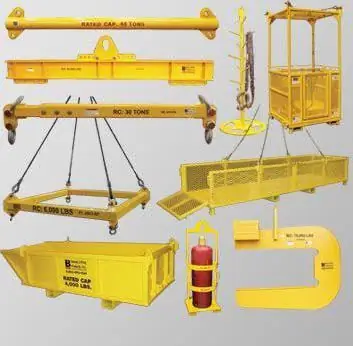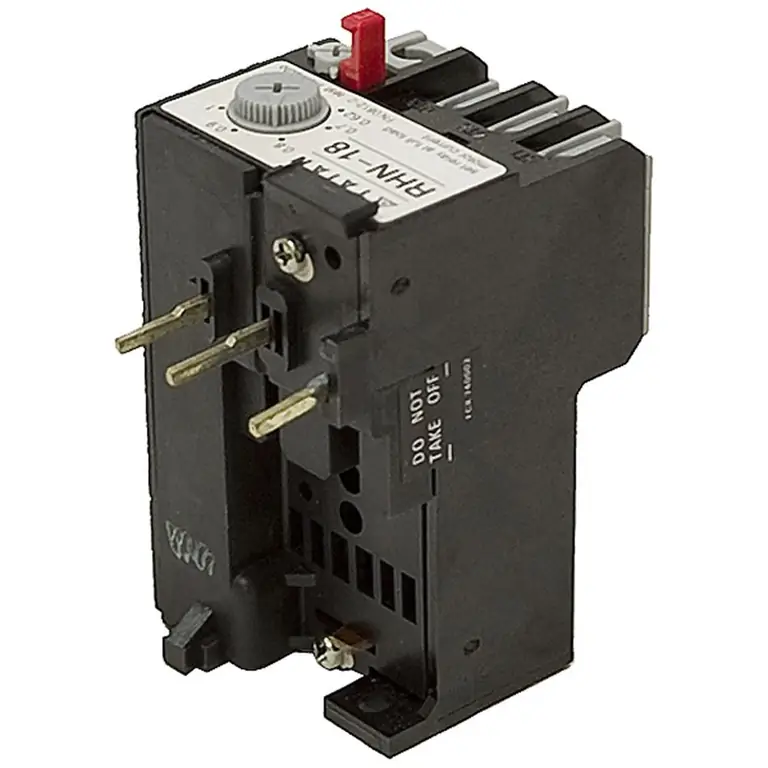2026 Author: Howard Calhoun | [email protected]. Last modified: 2025-01-24 13:10:35
Many areas of industry, manufacturing, and warehousing require auxiliary equipment to handle various loads. In a broad sense, lifting devices include hooks, slings, rigging devices, traverses and other mechanisms that perform fixing tasks. Some models also carry out lifting operations, which increases their functionality. Typically, the designs of load grips provide for the presence of elements of a hoist, crane, winch and hooks, designed to perform manual lifting and transport activities. In turn, the container acts as an additional or independent device that allows you to store or transport cargo.
Scope of application

Loops, like containers, are commonly used by personnel who work with cranes. Employees of transport and industrial enterprises, including machinists, crane operators, locksmiths and operators, also ensure the maintenance of this equipment. But in the overwhelming majority of cases, load-handling devices and containers are used by slingers and otherspecialists who control crane installations via radio channels. In addition, they inspect the technical condition of the devices before using them.
Load gripper

The design of load grippers, as a rule, includes two basic elements: a connecting element and a hook device itself. The first component provides an indirect or direct coupling of the crane with the grab. This connection can be made by a similar mechanism on the crane or by means of a traverse through its metal structure. The element also bears the names of a rope or chain mechanism, a link and a bracket. An equally important part, on which the load-handling devices and containers are based, is the hook, which is in direct contact with the cargo being handled. The device can also be used as a stand-alone device. Due to the possibility of detaching the structure from the lifting machine and the load itself, it is called removable.
Classification of lifting devices

Representing an extensive group of devices, load grippers differ in many characteristics. So, depending on the purpose, there are universal and special models, and according to the type of operations performed - manipulation, balancing and holding. In addition, devices are differentiated by design, which, in turn, determines the type of load retention. E.g. eccentric, lever and wedge load handling devicesprovide clamping fixation, grabs allow you to scoop bulk mass, and classic modifications with traverses support the load. There are other models, but they are used less often. In particular, electromagnetic devices operate by attraction, which allows them to be used only in special conditions.
Tare in the lifting system
Along with the fixation and lifting of goods, full-cycle enterprises usually provide conditions for their warehousing, movement and storage. To perform these operations, a multi-turn container is used - in essence, a container that complements load-handling removable devices by means of special clamps. Different materials are used in its manufacture - for example, they can be metal or polymer (in modern versions) devices. In some embodiments, a combined base of metal and wood is used. Such devices differ from traditional storage methods in the presence of hooking mechanisms. With their help, operations are carried out to capture the cargo.
Varieties of containers

Depending on the enterprise or organization, it is supposed to service goods with certain characteristics. In addition, the conditions and technical possibilities for fixing, lifting and storing differ. Consequently, there are several models of containers that can be used in certain cases, as well as lifting devices, the classification of which is much wider. It is important to note that representatives of the same type inholding equipment often have optimally suitable types of containers - that is, it is necessary to correlate the characteristics of fixtures from two categories.
Flexible containers are used for handling small weight and size cargoes. This is the cheapest and easiest option available in bales, nets, bags and bags. The category of semi-rigid containers includes grates, buckets and baskets, which are serviced by lifting devices with higher strength (metal). Such devices are suitable for the transport of bulk cargo. Rigid containers are used if it is necessary to accept loads from third-party forces. This group includes high-strength troughs, containers, barrels, boxes and other types of containers that can ensure the safety of cargo from mechanical stress.
Checking the performance of load grippers and containers

Because lifting and holding operations involve a high degree of responsibility, the equipment used must comply with performance standards. There are two ways to check devices, on the basis of which a conclusion is made about their readiness for use. Firstly, this is a revision of the technical condition, which provides for the inspection of load-handling devices and containers directly by the owner. Secondly, this is a survey of mechanisms, which is carried out by an expert commission. Typically, such events take place at industrial facilities, whose type of activity is associated with hazardousproduction processes. As a duty prevention, it is worth noting the daily visual inspection of the equipment performed by slingers before work.
Inspection procedure

In accordance with the rules, the inspection of removable load handling devices provides for the creation of optimal conditions for identifying defects and checking the technical feasibility of the design. For example, equipment that is in working condition and at the time of the inspection is fixed on the corresponding crane is subjected to inspection. Slings can be inspected in a special place. If it is planned to examine a large number of specimens, then it is necessary to sort them by type, characteristics and carrying capacity. Usually slings are checked near the place of operation with the expectation of further use.
Capacities, as a very important component of the entire holding and lifting system, also require attention to their condition. The container, as well as the main load-handling devices, must have technical documents corresponding to it. In order to simplify the inspection, it is necessary to provide accessibility to the elements intended for the transportation of containers. It is checked in isolation from the place of operation, that is, inspection is possible without the use of a special crane. However, this does not mean that testing the capabilities of the container for the ability to work with a load handling device is excluded in every case - this is what suspension tools are provided for.
Possible defects

During the inspection process, it is possible to identify many flaws and damages in the equipment, the presence of which does not imply its further operation. In particular, an inspection of load handling devices can reveal cracks in the metal structure or welds, traces of corrosion, delamination of the frame, etc. Grabs often show insufficient elastic seals, as well as a lack of tightness. Regarding containers, the locking and locking mechanisms may not work with the risk of arbitrary opening of the container during lifting or unloading, but more often there are signs of corrosion or abrasion with severe deformation.
Repair activities
After fixing deviations from the norm of the technical condition of load-handling devices, it is possible to carry out refurbishment. But this is not allowed in all cases, so defective removable load-handling devices and containers are often recycled. Works that are usually carried out in the restoration format include welding of critical components (grabs, levers, loops, etc.), straightening of individual parts, sealing ends on ropes, replacing fixing elements, and other activities. After that, tests are carried out and an assessment is made of the suitability of the equipment for further work.
Recommended:
Grounding devices and electrical safety

With an internal breakage of the conductor, it becomes possible for it to touch the body of the device, and in this case the latter will be a mortal danger, invisible, and therefore doubly terrible. Grounding devices are used to avoid such situations
Types and types of containers

For a long time, a convenient way to move goods has been used all over the world. Nowadays, there are a large number of different containers for transportation, both small and large. The types of containers, and that is exactly what they are called, are different, they are used to transport cargo over short and long distances
Rigging devices, means and mechanisms

Any industrial production, to one degree or another, is associated with the installation of oversized and complex goods. In many cases, a person cannot do this work on his own. For this, rigging means, mechanisms and devices are used
Protection devices: purpose, types, classification, specifications, installation, features of operation, settings and repair

Protection devices are currently in operation almost everywhere. They are designed to protect both electrical networks and electrical equipment, various machines, etc. It is very important to properly install and follow the operating rules so that the devices themselves do not cause a fire, explosion, etc
Modern self-service devices: what is the difference between a terminal and an ATM?

We all use these self-service devices: withdraw, deposit cash and pay receipts. If you or your friends still do not know how a terminal differs from an ATM, then this article is a must-read

